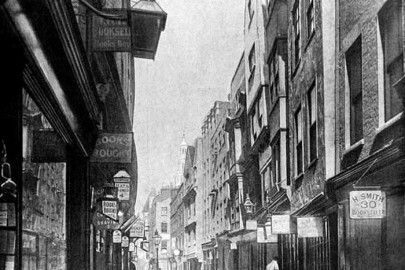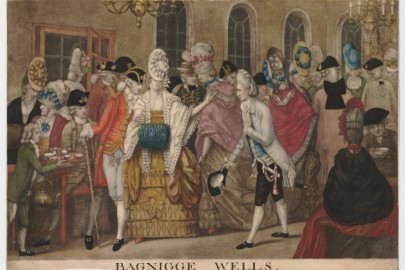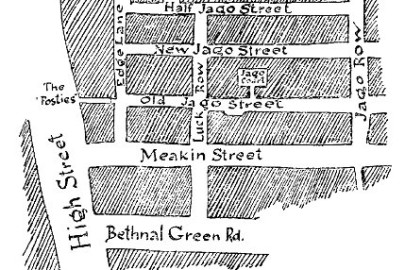Jonathon reviews Terence Blacker’s new novel – and contemplates the role of rats in fiction…
These are the primary stereotypes with which slang burdens the rat. All are negative, none may be observed in the actual animal. They are, as should be apparent, the characteristics of human beings. Those, in every case, are all too well attested. An unpleasant person; a person who changes allegiance out of self-interest; an informer; a worker who undercuts standards established by unionized labour; a cunning, deceitful person; a prison thief; an incompetent. The quittance of sinking ships is overlooked but slang is ever-practical and why should any sentient being not wish to save its life from danger. The Black Death does not lend itself to slang equivalencies but we all know about ‘you dirty rat’. Nor does the list include parity with the Jews, but the Nazis reveled in the identification and acted towards their victims as humanity has invariably acted towards rats: with both calculated and hysterical barbarity. Barbarity but not ‘inhumanity’: such actions seem to me to epitomize humanity in relation to those it fears, too often unjustifiably, and thus hates, with that particular cruelty born of terror.
I have no idea whether Terence Blacker, whose book The Twyning tells the story of a needless, vicious, politically motivated war of extermination carried out by humans upon rats, embraces the full extent of my pessimism – the war is lost and the ending thus relatively ‘happy’ – but these are the thoughts that his book promotes in me. Nor am I quite sure at whom his tale is aimed. The story of two rats – one who for a while becomes marginal to his strictly ordered community, the other a pet rat, a ‘fragile’ in Blacker’s terminology – and two young humans, equally marginal, equally fragile, set against a world that suggests Dickensian London – seems to elude classification as that publisher’s confection, the ‘young adult novel’, but is neither children’s story nor wholly adult, other, perhaps, in the grimness of its themes. It is touted as the rodents’ equivalent to Watership Down but I failed to embrace that flopsy fantasy, while Mr Blacker’s book reduced me at times to anger, to horror, even to tears, and, in its climax, to elation.
Even including the work of James Herbert, and I offer no animus, the rat does not bulk large in fiction. The usual trope is slang’s: wholly negative, typically the rats of Orwell’s Room 101 in 1984. Poe uses them as rescuers in ‘The Pit and the Pendulum,’ but they are not heroic, merely hungry. And while the Jews are portrayed as mice in Art Spiegelman’s Maus, the Poles are drawn, less sympathetically, as rats.
On the positive side there is Beatrix Potter’s Roly Poly Pudding, in which Samuel Whiskers and his wife Anna Maria traumatize the hapless Tom Kitten, though some, myself included, might suggest that reforming a bullying feline is no bad thing. The book is dedicated to Mrs Potter’s own ‘sammy. The intelligent pink-eyed Representative of a Persecuted (but Irrespressible) Race!’ And there is Terry Pratchett’s The Amazing Maurice and His Educated Rodents. This, of course, is set in Discworld and is based on magic. The plot is not wholly dissimilar: rats v. humans, but then no surprises there. To his fans – I am one – Mr P. is possibly a genius; let us leave it at that. Like the Educated Rodents Mr. B’s rats, in their home in the Great Hollow, have the power of speech, or rather ‘revealing’, a form of telepathy which can stretch to fortunate humans. Mr Blacker has observed or perhaps read up rats and some of their characteristics are those that have been recorded. They are hierarchical, as rats are, but their councils, tribes and King are inventions. Efrem, our philosophical hero, is eventually offered the Kingship, but as a thinker rejects it in favour of a warrior. In the end, having inspired his community to win a war that they did not choose, he opts for domesticity alongside his ‘fragile’ partner Malaika. The Twyning itself is better known, and found in nature, as a rat king, whereby a number of the animals’ tails merge together and result in a multi-headed, multi-bodied entity.
The Pratchett humans vary as to type, they are far from universally unsympathetic and generally more fools than knaves. They are biddable and bidden. The Twyning is less forgiving: other than the young duo, barely any humans are not venal, self-promoting, prone to the empty fanaticism of moral panics or gleeful devotees of some degree of cruelty, whether as vivisector, rat-hunter or ‘sportsman’. As Mr Blacker writes, ‘While [humans] remain in this world, no other living creature is safe’ and notes that ‘The need to terrify is part of their natures.’ This is sad and shaming and I shy from the condemnation: I may be a rat de bibliotheque but I am in the end a human. Still, I would suggest that it is also true. Paradoxically the two exceptions are themselves a rat-catcher, who like some of those whose job is to kill ‘beasts’ still understands their virtues, and a publican who initially hosts the now outlawed ‘sport’ of ratting, whereby groups of rats were pitted against a succession of dogs. The winner was that dog who massacred his targets in the shortest time. The rats, like the victims of human genocide, were not offered an alternative to death.
Where Messrs Blacker and Pratchett meet again is in what must be termed the moral of each tale: that rats and humans, however grudgingly, have to live together and had better work something out. If for a moment we had forgotten that we are in a world of fiction, then surely this is the reminder. The practice is that rats and humans do indeed live parallel, even symbiotic lives; the theory remains the opposite. The rat has drawn the short straw. It may be clean, intelligent, its does good mothers, its relations to humans, at least when companions, loving, but none of this is acknowledged. The rat is an enemy and treated as such.
The reviewer should be neutral. I fear I am not. I have lived with rats, albeit ‘fragiles’, and one of these I mourn every day. So The Twyning works for me – how could it not – and I revel in its intelligence and empathy even if I regret the role played by my own species. Mr Blacker gets the tail and whiskers. And I mean that in the best possible way.













Thanks for the review Jonathan – it sounds a bit like Duncton Wood, but with rats instead of moles…
Terence Blacker’s book about Willie Donaldson is a terrific read which I recommend to anyone
I really liked Watership Down – even as a kid I admired the chutzpah of writing a bleak, deep, semi-spiritual epic about bunny-rabbits.
I have an ancient copy of the Tale of Samuel Whiskers – one of my childhood favourites – and several Randolph Caldecott books (collected later) that feature some rather endearing rats. What about Ratty in Wind in the Willows too? And… “reforming a bullying feline is no bad thing” – what exactly do you mean by that, Jonathon?
Reform? Stopping them killing rats. And if you disapprove of this seeming attempt to stem nature, then remember that Tom’s sisters – Mittens and Moppet – grew up into excellent ratters. Mrs Potter appreciated animals; she did not romanticise them.
As for Ratty in WitW, he was modeled in part on Frederick Furnivall, one of the founding fathers of the OED. FF was a pal of Grahame and supposedly introduced him to the pleasures of the river. Furnivall himself, apologies if I have already posted on this, ran a rowing eight composed of waitresses from the ABC restaurant in New Oxford Street (here they are: http://bit.ly/X0V4uk and http://bit.ly/12WgRHk) and indeed married one of them. Sadly, like Miss Havisham, she died when her dress caught fire via an ill-placed candle. But then FF also wore a red tie and it may have been felt by his starchier contemporaries that this bereavement was no more than he deserved.